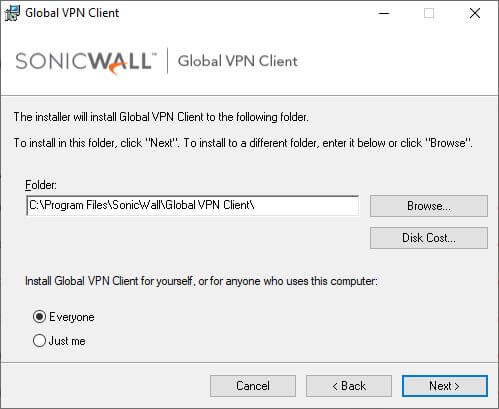

- #DELL SONICWALL GLOBAL VPN CLIENT ANDROID ANDROID#
- #DELL SONICWALL GLOBAL VPN CLIENT ANDROID PASSWORD#
- #DELL SONICWALL GLOBAL VPN CLIENT ANDROID WINDOWS#

If you have a second DNS server, type the IP address in the DNS Server 2 field.Ħ. Enter the IP address of your first DNS server in the DNS Server 1 field. Enter the number of seconds in the Keep alive time (secs) field to send special packets to keep the connection open. Click Configure to display the L2TP Server Configuration dialog.Ĥ. The VPN > L2TP Server page provides the settings for configuring the Dell SonicWALL network security appliance as a L2TP Server.ġ.
Note For more complete information on configuring the L2TP Server, see the technote Configuring the L2TP Server in SonicOS located on the Dell SonicWALL documentation site.
#DELL SONICWALL GLOBAL VPN CLIENT ANDROID ANDROID#
#DELL SONICWALL GLOBAL VPN CLIENT ANDROID PASSWORD#
L2TP supports several of the authentication options supported by PPP, including Password Authentication Protocol (PAP), Challenge Handshake Authentication Protocol (CHAP), and Microsoft Challenge Handshake Authentication Protocol (MS-CHAP). L2TP provides interoperability between different VPN vendors that protocols such as PPTP and L2F do not, although L2TP combines the best of both protocols and is an extension of them. You can use Layer 2 Tunneling Protocol (L2TP) to create VPN over public networks such as the Internet. In situations where running the Global VPN Client is not possible, you can use the Dell SonicWALL L2TP Server to provide secure access to resources behind the firewall. The Dell SonicWALL network security appliance can terminate L2TP-over-IPsec connections from incoming Microsoft Windows or Google Android clients.


 0 kommentar(er)
0 kommentar(er)
